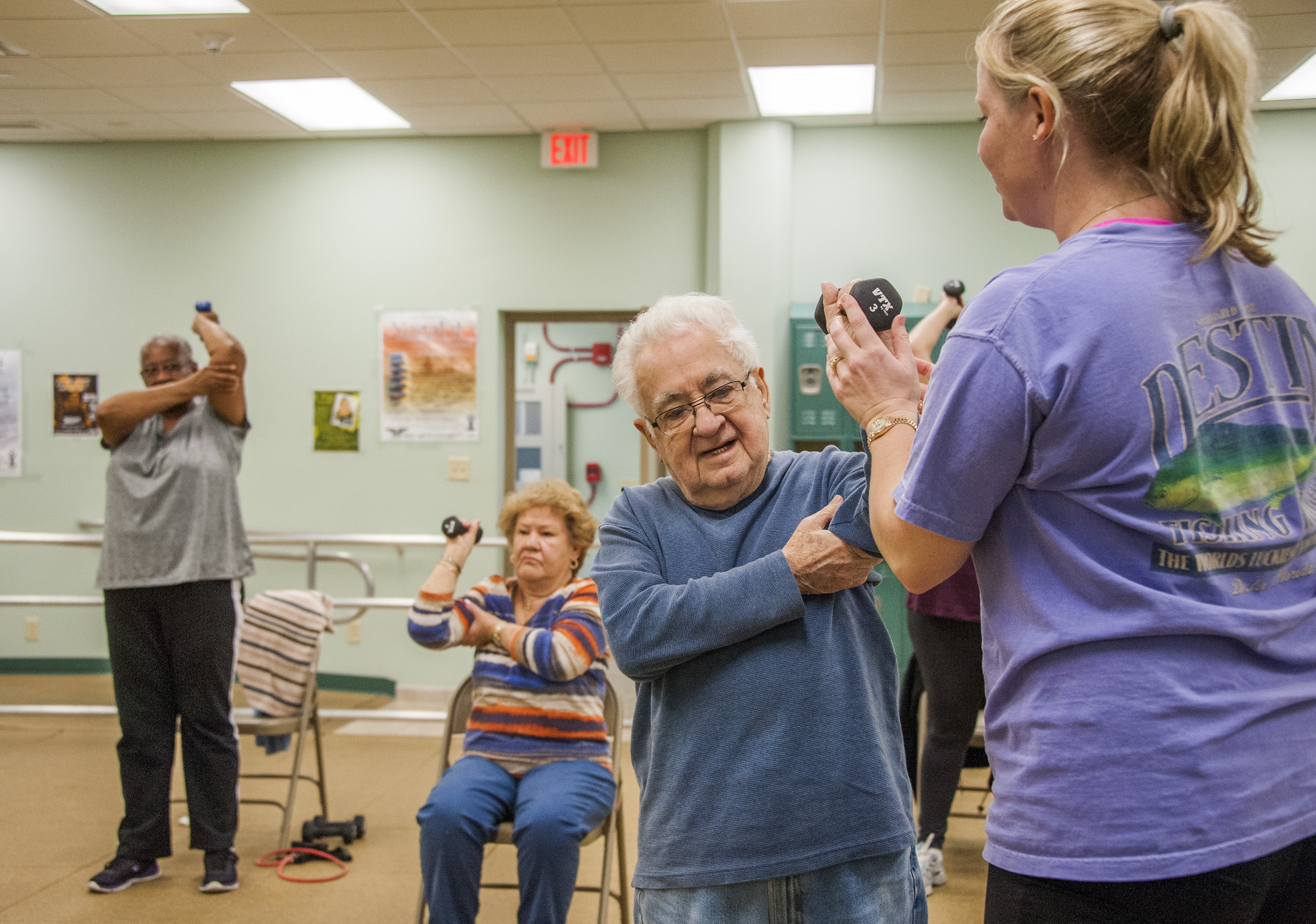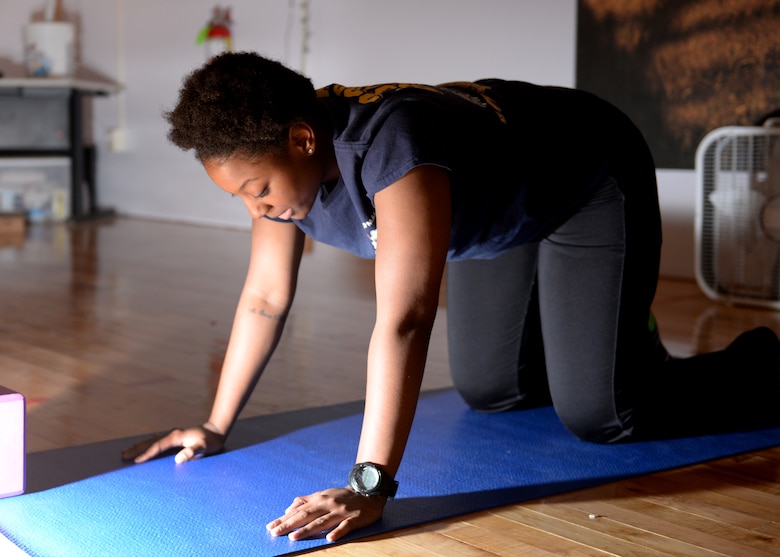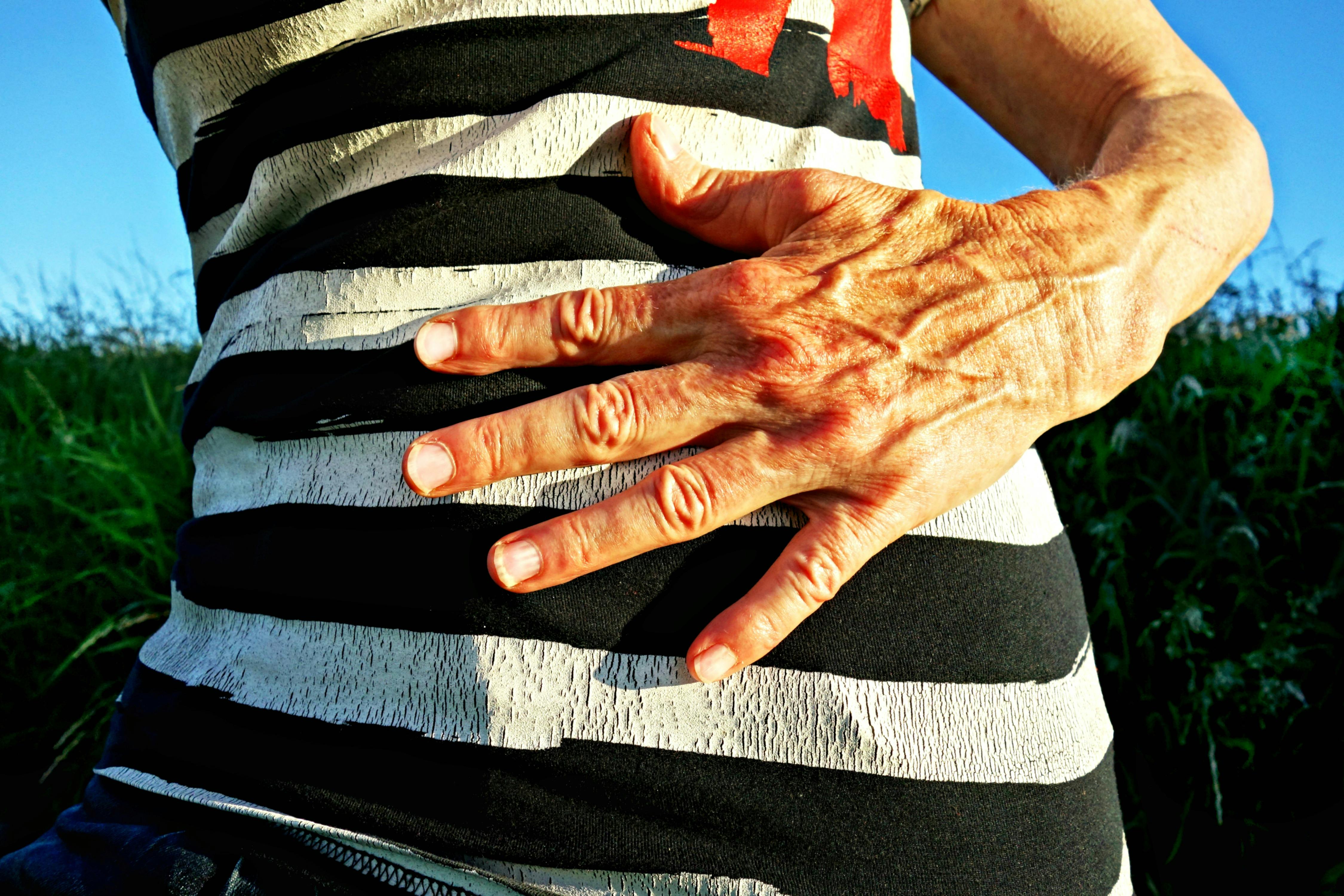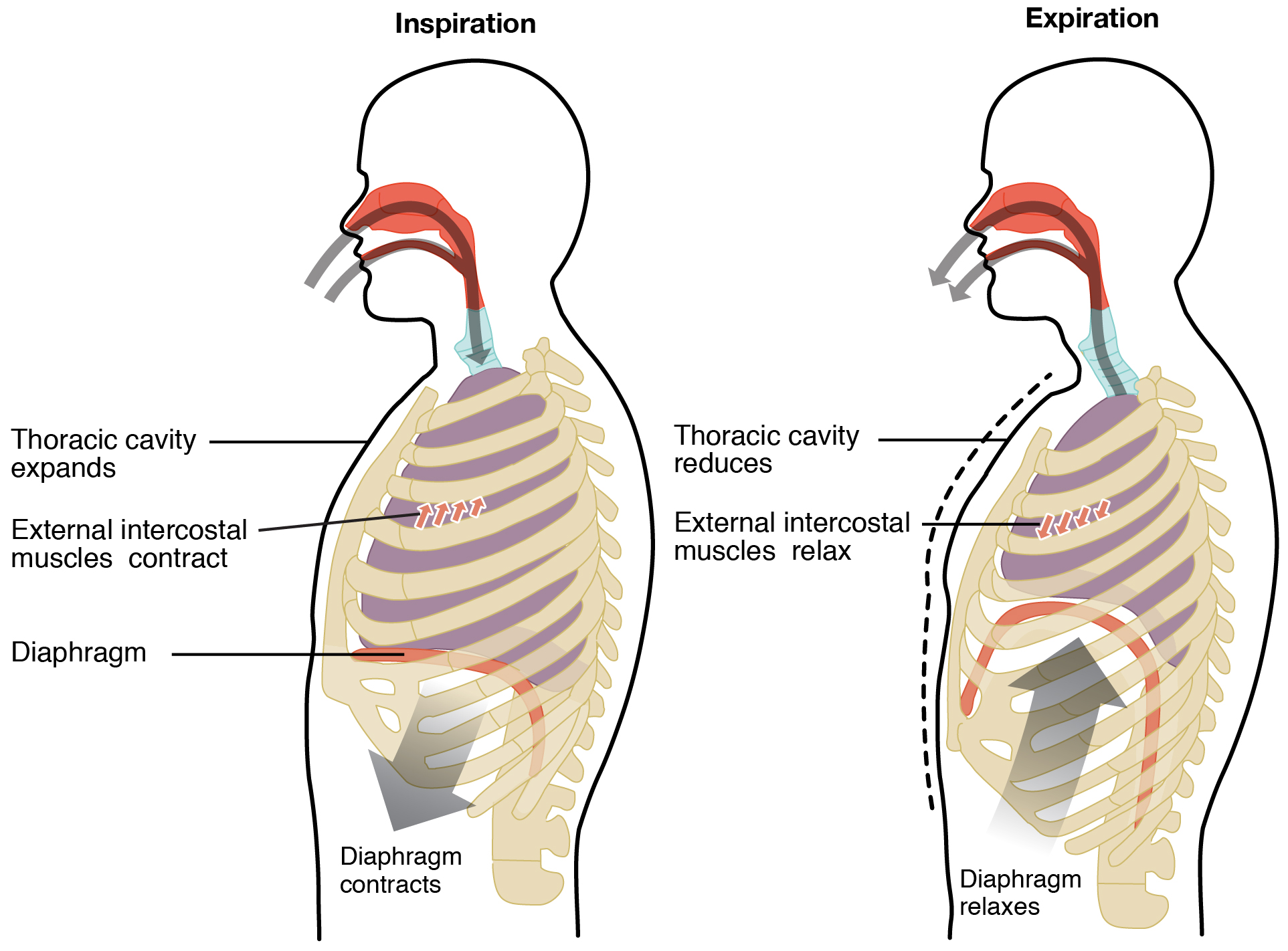
As a respiratory disease, COPD comes with many symptoms, but the most serious and uncomfortable of these symptoms is difficulty breathing. These breathing problems have a variety of interconnected causes, including airway obstruction, reduced lung function, and a reduced capacity for exercise that are all caused by COPD.
In fact, almost every COPD treatment is, ultimately, aimed at managing your breathing. Bronchodilator medications, supplemental oxygen, and even diet and exercise regimens are all meant to help relieve airway obstruction and help you breathe as efficiently as possible.
But there's another type of COPD treatment that is invaluable for managing COPD symptoms and keeping your breathing under control: practicing breathing exercises. You've probably heard about breathing exercises from your doctor, but you might not yet understand how handy and effective they can be.
Breathing exercises are perhaps the most convenient and useful techniques that any COPD patient could add to their toolbox. They're absolutely safe, surprisingly effective, simple enough for anyone to learn quickly, and one hundred percent cost-free.
In this article, we're going to teach you about all of the breathing techniques that doctors and researchers recommend for people with COPD. We'll not only introduce you to the most effective breathing exercises and teach you how to practice them but also help you understand how they work and what the best times are to use them.
Breathing Exercises for COPD

One thing that makes breathing exercises such a valuable treatment option is the fact that you can use them anytime and anywhere as long as you remember the steps. So, if you'd like to add some new techniques to your COPD treatment tool set, continue reading to learn how to use several different breathing exercises to help you breathe easier and better manage your COPD symptoms.
The Stop, Reset, and Continue Technique

When you have trouble breathing it can be a very scary experience. However, if you let yourself become too anxious or distracted by worry, it will make it even harder for you to catch your breath.
Once breathlessness starts, it can easily cascade out of control, becoming worse and worse if you don't manage it quickly. That's when you need to stake a step back, pause, and regroup so that you can begin using proven strategies to get your breathing back under control.
Simply worrying about feeling breathless can even trigger a bout of breathlessness or hyperventilation on its own, especially if you suffer from chronic anxiety or panic disorder. Whatever the cause of your breathlessness, it's important to keep a level head whenever the symptom strikes.
That's why the "stop, reset, continue" technique is such a valuable tool for any person who has COPD. It helps you stay calm, re-focus, and then begin steadying your breathing until it returns to normal.
Here is how you practice the stop, reset, and continue technique:
- Stop whatever activity you are doing and sit or lie down whenever you start to feel short of breath.
- Reset your breathing by relaxing the muscles in your shoulders and chest and practicing a breathing exercise (such as pursed lips breathing, which we'll discuss in the next section below) until you are able to catch your breath.
- Continue whatever activity you were doing before, at a slower pace if necessary, while continuing to consciously control your breathing.

You can use this technique if you get breathless from physical activities like walking, exercising, or doing chores around the house. It can also work when you feel short of breath for other reasons, such as when you experience an exacerbation or when your symptoms flare up because of exposure to allergens, pollution, temperature extremes, and other respiratory irritants.
The "stop, reset, continue" method works because it keeps you in clear-headed command of your thoughts and your breathing. It helps cut through anxiety, reminds you not to panic, and allows you to concentrate on practicing breathing exercises and other treatments that can help you recover.
This may seem like a simple technique, but it can be surprisingly effective in the moment. The next time you have trouble catching your breath, just repeat the simple steps "stop, reset, and continue" to remind yourself that you have the ability to bring your breathing back under control.
As you do your breathing exercises, you might need to remind yourself to stop, reset, and continue multiple times as you lose control or focus. Reset as many times as you need until your get your symptoms under control.
When you feel short of breath, you should also use your quick-relief medications--such as your bronchodilator, supplemental oxygen, or inhaled corticosteroids--as directed by your doctor. Using these in combination with breathing exercises can be more effective than just practicing breathing exercises alone.
Pursed Lips Breathing
Pursed lips breathing is the number one, staple breathing technique that everyone with COPD should know how to use. It's probably the most simple, effective, and versatile method for preventing and treating breathlessness caused by COPD.
If you don't have this method memorized yet, then now is the time to learn it by heart. Once you have the basic steps down, you can use pursed lips breathing to aid you in a multitude of situations and circumstances.
That's because pursed lips breathing isn't just something you use when you feel breathless to get your breathing back under control. It's also a technique for preventing breathlessness when you exert yourself and helping you breathe easier in any situation.
Research shows that using pursed lips breathing helps open up your airways, reduces airflow resistance, and uses less effort and energy to breathe. It also makes your breaths easier to control when you exercise or when you experience a flare-up that makes your symptoms worse, which can prevent breathlessness from ever occurring in the first place.
One study showed that COPD patients who practiced pursed-lips breathing while exercising had increased exercise endurance and were able to take in more oxygen as they worked out. Pursed-lips breathing also helped steady patients' breathing rates, reduced rapid breathing, and even increased the levels of oxygen in their blood.
Pursed lips breathing can be particularly helpful for people with emphysema, who often have trapped air in their lungs that makes it difficult to breathe. Pursed lips breathing helps push the trapped air out, allowing you to take deeper breaths and absorb more oxygen every time you inhale.
How to Practice Pursed Lips Breathing
Pursed lips breathing is simple to learn and easy to do, but that doesn't mean you don't need to practice. You should take the time to practice pursed lips breathing every day until it becomes second nature. To do that, you need to concentrate on the steps and the process, not just go through the motions.
Here is how you perform the pursed lips breathing technique:
- Lie down or sit upright in a chair and relax the muscles in your shoulders and chest.
- Take a slow, deep breath in through your nose (not your mouth) for two seconds. You can repeat the words in your head, "Inhale, one, two" to help you keep rhythm if you like.
- Next, purse your lips as if you were about to whistle or blow out a candle.
- Then, breathe out slowly and steadily for a count of four (twice as long as your inhale) through your pursed lips. You can repeat the words "Exhale, one, two, three, four," in your head to help you keep pace.
- Repeat.
The are a couple of key things to remember while practicing pursed-lips breathing: First, inhale only through your nose and exhale only through your mouth. Second, make sure to exhale for about twice amount of time that you spent inhaling.
You can use the pursed lips breathing technique any time you like, and it can even help you breathe easier when you're not experiencing any acute COPD symptoms. However, pursed lips breathing is especially effective to use when you exercise or exert yourself in any way.
For example, you can use pursed lips breathing when you climb stairs, do housework, or get up from a chair to keep your breathing even and steady. This can prevent fits of coughing and breathlessness, help you increase your endurance and tolerance for physical activities, and live a more comfortable, active life.
If you would like to see a visual demonstration of how to practice pursed lips breathing, check out this video from National Jewish Health.
Coordinated Breathing
Coordinated breathing is a technique for keeping your breathing controlled and steady when you exercise or do any other kind of physical activity. It makes it easier to breathe, reduces shortness of breath, and helps you stay focused on your breathing as you exercise.
"Coordination" is the key part of coordinated breathing, because it helps you time--or coordinate-- your breaths to keep pace with the rhythm of your movements. This helps you breathe steadily and deeply while you perform physical activities and prevents you from holding your breath, which is a common, but counterproductive reaction that many people have when they exert themselves or feel breathless.
How to Practice Coordinated Breathing
 |
| Photo by Ilke Cole |
The purpose of coordinated breathing is to help you remember to breathe steadily while you exercise instead of breathing erratically or holding your breath. You should practice coordinated breathing any time you work out or do a tiring physical activity.
Coordinated breathing is, more or less, a modified version of pursed lips breathing that helps you match the breathing technique with your movements as you exercise. If you haven't yet memorized and mastered pursed lips breathing, you will probably need to practice it while resting first to let it sink in before you can rely on it to help you in the middle of physical activity.
Here's how you perform the coordinated breathing technique:
- Before you start a movement that's part of your exercise or activity, take a deep breath in through your nose for a couple of seconds.
- Begin doing your activity and, as you reach the most difficult or exerting part, purse your lips and exhale slowly for twice the number of seconds that you breathed in.

It can help to count your breaths in your head or out loud while you exercise to help you focus on coordinated breathing and keep the correct rhythm. Counting out loud also keeps you from holding your breath and helps you remember to stop or slow down if you get too breathless to speak.
Here are a couple examples of what coordinated breathing looks like in practice when you use it during everyday exercises and activities:
Coordinated Breathing While Climbing Stairs:
- Start by taking a deep breath in for about two seconds.
- Then, while breathing out slowly through pursed lips for about four seconds, climb 1-4 steps up.
- Pause, then repeat.
Coordinated Breathing While Vacuuming:
- Before you start, take a deep breath in for about two seconds.
- Next, push the vacuum forward while you breathe out slowly through pursed lips for about four seconds.
- Inhale again for two seconds as you pull the vacuum back toward you.
- Then, exhale again for about four seconds as you push the vacuum forward once more.
- Repeat.
Another great way to practice coordinated breathing is through certain types of yoga, like Vinyasa, which focus on combining breathing with fluid movements. Tai chi is another type of healthy exercise you can do that utilizes coordinated breathing as part of its routines.
 |
| Photo by Airman 1st Class J. Zuriel |
Check out this video for a helpful demonstration of how to use coordinated breathing during Vinyasa yoga. Even if you don't practice yoga, this video provides a practical example of how to coordinate your breathing with body movements that you can apply to any kind of activity you do.
Deep Breathing
Deep breathing is an effective method for getting trapped air out of your lungs and getting bigger, fuller breaths. Deep breathing can also help you stay calm and reset your breathing pattern when you feel short of breath.
This breathing technique works by filling your lungs up to maximum capacity and then slowly deflating them until every last bit of air is pushed out. This helps gets rid of any stale air that has been trapped in your lungs, which then allows you take in more fresh, oxygen-rich air with every breath.
Deep breathing can also help you relax your body and mind when you feel anxious or stressed. And, since anxiety is a common precursor to worsened shortness of breath, it might even help you preempt bouts of breathlessness triggered by anxiety.
How to Practice Deep Breathing

Deep breathing is a great exercise to practice along with other breathing techniques like pursed-lips breathing and diaphragmatic breathing (discussed in the next section below). When you feel short of breath, it might help to try deep breathing first, that way you can push any trapped air out of your lungs before moving on to other techniques.
Here is how you perform the deep breathing technique:
- Find a comfortable place to stand or sit and relax your shoulders and chest muscles.
- Push your elbows back slightly to open up your chest cavity and give your lungs more room to expand.
- Take a deep breath in through your nose until your lungs are fully inflated.
- Hold your breath for about five seconds. You can count the seconds off in your head to help you stay focused.
- Exhale slowly through your mouth until you have pushed all of the air out of your lungs.
Diaphragmatic Breathing

Diaphragmatic breathing, also known as belly breathing (and sometimes "deep breathing"), is a versatile breathing exercise that can help you breathe more fully, steadily and slowly. It not only prevents breathlessness caused by COPD, but it can help you relax your chest, make it easier to breathe, and allow you to more quickly catch your breath when your symptoms act up.
Diaphragmatic breathing is a classic techniques that has long been recommended to patients with COPD. It is a breathing exercise meant to train your body to breathe from your belly (using your diaphragm) instead of using your chest muscles to breathe.
This is beneficial to people with COPD because their lungs and chest muscles already have to work overtime to make up for the fact that they can't absorb oxygen efficiently. This can cause chest soreness and discomfort, making it more difficult and uncomfortable to breathe.
The idea behind diaphragmatic breathing, however, is that it takes the work of breathing off of your chest muscles and puts it on your diaphragm, which is better designed to handle the work. This can help you breathe easier, get more oxygen to your lungs, and prevent the muscles in your chest, shoulders, and back from getting sore and worn out from breathing.
 |
More recently, however, experts have begun questioning the long-term effectiveness of diaphragmatic breathing for people with COPD. While it can help you breathe from your diaphragm in the short term, more recent research suggests that it may not have the expected long term effects.
For example, some studies show that even when you practice diaphragmatic breathing regularly, it usually doesn't stick. It may not be possible to "retrain" your muscles because, as soon as you're not consciously thinking about breathing with your diaphragm, you'll likely go right back to using your chest muscles to breathe.
However, even if you can't retrain your body to use diaphragmatic breathing all the time, it can still have immediate, short-term benefits. Consciously practicing diaphragmatic breathing when you do activities or experience worsened COPD symptoms can provide some relief and reduce the amount of effort it takes to breathe.
For example, if you have severe COPD or experience a flare-up or exacerbation, you might experience worsened chest pain or sore chest muscles from coughing and wheezing. At times like these, you may be able to take some of the strain off of your chest and temporarily relieve some discomfort by practicing diaphragmatic breathing.
How to Practice Diaphragmatic Breathing

To practice diaphragmatic breathing, it's best to lie on your back in a quiet, comfortable place. However, you can also practice this technique while sitting or standing if needed.
Here is how you practice diaphragmatic breathing:
- Sit down in a chair or lie down in a comfortable position. Make sure to relax the muscles in your shoulders, neck, and chest.
- Then, place one of your hands on your chest and one on your belly so you can feel them expand as you breathe.
- Take a deep breath in, concentrating on using your belly (diaphragm) to breathe. You should feel your stomach inflate and the hand resting on your belly should rise as you inhale. Focus on keeping your chest still.
- Next, exhale slowly though pursed lips, focusing on using your belly to push the air out while keeping your chest still. You should feel your belly deflate and the hand on your stomach should fall as you breathe out.
- Repeat.
The key part of diaphragmatic breathing is keeping your chest muscles relaxed while you breathe with your stomach (or diaphragm). Placing your hands on your stomach and chest helps you focus on this goal and easily identify which muscles you are using to breathe.
For more information and a demonstration of how to practice this technique, check out this video on diaphragmatic breathing from the American Lung Association. This video will help you better understand the benefits of diaphragmatic breathing and how to use the exercise to improve your breathing in everyday life.
The Power of a Relaxed Posture

You might have noticed that the first step to practicing any of these breathing techniques is to relax your body. That is because it's common to tense up the muscles in your shoulders, neck, and back when you are struggling to breathe.
This tense posture happens naturally, but it can make it even more difficult to breathe when you feel short of breath. Instead, you should always do your best to keep your body relaxed, even when you're feel like you can't breathe.
Keeping the muscles in your neck, chest, and shoulders relaxed can help relieve airway obstruction and make it easier to catch your breath. It not only relaxes the muscles in your chest cavity, giving your lungs more room to expand, but also relaxes the muscles in your throat and airways so air can more easily flow through.
Relaxing your body can also help you feel more calm, as tense muscles send signals to your brain that make you more aroused and anxious. The more calm you are, the easier it is to slow your breathing rate and stay focused on productive breathing exercises that can make the breathlessness pass.
Pulmonary Rehabilitation
Pulmonary rehabilitation is like a special health class designed to help people with COPD and other respiratory diseases improve their breathing and better manage respiratory symptoms like shortness of breath. Taking a pulmonary rehabilitation class is a fantastic way to learn more about breathing techniques and how to use them during exercise and in your everyday life.
In pulmonary rehab, you will get plenty of opportunities to learn and practice practical breathing strategies and exercises along with other patients who have COPD. You'll also learn how to use your medications to control your symptoms, how to make lung-healthy lifestyle choices, and how to exercise while coordinating your breathing and keeping your symptoms under control.
Pulmonary rehabilitation is often recommended to COPD patients who have trouble exercising, doing daily activities, or managing their symptoms on their own. If you would like to join a pulmonary rehabilitation class you will need to talk to your doctor to get a referral first.
Practice Makes Perfect!
If you have COPD, there's no excuse for not learning and utilizing these extremely simple, yet surprisingly powerful, techniques for controlling your breathing. They're not only easy to learn, but easy to practice compared to other COPD treatments because they take such a little amount of effort and time out of your day.
After studying this article, you should know how to practice the most effective COPD breathing exercises and understand when each is most helpful to use. If you put in the time to study and practice these techniques, you'll be better able to catch your breath and keep your breathing steady in the midst of difficult COPD symptoms.
As we've mentioned before, practicing breathing techniques regularly, especially when you're not having trouble breathing, is key for reaping maximum benefits from the exercise. After all, if you don't learn to control your breaths when your symptoms are mild, you won't remember how to perform the breathing exercises when you're in the midst of a fit of breathlessness or coughing.
Along with bronchodilators and other rescue medications, breathing exercises should be your first defense against COPD symptoms like breathlessness, coughing, and wheezing that make it difficult to breathe. The better you can breathe, the better your COPD symptoms will be, and the better quality of life you can live with the disease.


.png)



